- Administrator
- Albums and Singles
 In 1997, Bristol's trip-hop troubadours Portishead released their self-titled sophomore album, a deeply moving account of agonizing, feverish love and world-weary heartbreak. Its forlorn brilliance stunned me, leading me to privately refer to it as the soundtrack to a suicide. Now, another British electronic musician follows up a critically acclaimed breakthrough with a superlative sequel that, for me, shares both that ominous honor and my firm vote for Album of the Year.
In 1997, Bristol's trip-hop troubadours Portishead released their self-titled sophomore album, a deeply moving account of agonizing, feverish love and world-weary heartbreak. Its forlorn brilliance stunned me, leading me to privately refer to it as the soundtrack to a suicide. Now, another British electronic musician follows up a critically acclaimed breakthrough with a superlative sequel that, for me, shares both that ominous honor and my firm vote for Album of the Year.
Hyperdub
Although both acts employ liberal sampling policies in their recordings, where Portishead featured lush maximal production, Untrue succumbs instead to the understated aesthetic power of ascetic piety, self-flagellating while furnishing unexpected perverse indulgences in the empty spaces between figurative whip cracks. The carefully selected, vigilantly spliced vocal samples belie a consuming sadness in the soul, both of the man and his music. The revelation of a few of the original sources behind these samples sparked a ridiculous argument about copyright infringement on a prominent online forum, just one example of the divisiveness and rabidity Burial’s music leaves in its wake. In the end, it doesn't matter whether or not the unstoppable, jaw-dropping anthem "Archangel" co-opts bits of Ray J's "One Wish" or that "Etched Headplate" subtly appropriates and elegantly warps also-ran Amanda Perez’s perhaps best known tune. Rather, what should drive the debate is just how the artist lovingly though mercilessly utilizes this material to construct entirely different songs.
Pregnant with sacrosanct significance, Untrue follows zealously along its conceptual path with hardly any deviation from its aseptic mix of muted 2-step garage beats and uncompromising atmospheres. Formula can often kill album-length releases in single-oriented electronic music subgenres, but it works faultlessly here on cuts like the indomitable "Shell of Light" and "Ghost Hardware," the latter released on vinyl as well as digitally as a teasing prelude to the album. As on his first full-length, Burial dodges the bullet of monotony by interspersing curious ambient passages among the stuttering rhythmic tracks. Although on the surface "In McDonalds" might be a stupid name for a track, the gravity in its woefully brief duration negates any concern or skepticism with obtuse crackles and pads, punctuated at the very end by three simple but contextually hefty words: "you look different."
Entombed by the cumulative emotional weight of these 13 devastating new productions, I reluctantly wonder whether the pseudonymous recluse known as Burial isn't himself in a dire, depressive state of mind. How could an artist in isolation compose such gorgeous, tortured music and not give serious consideration to desperate, baleful thoughts? Where some find themselves inescapably awestruck and inspired by the beauty of Buria'’s obscured soul, his music actually troubles me to my core. The detatched moans on the penultimate track "Homeless" leads me to picture a sullen young man brooding in the corner, sobbing genuinely and despondently. Untrue isn't uplifting but self-destructive, overflowing with a poisonous despondency. This should be taken as a warning sign. Someone please reach out and give this lonely, talented man a call tonight.
samples:
Read More
- Administrator
- Albums and Singles
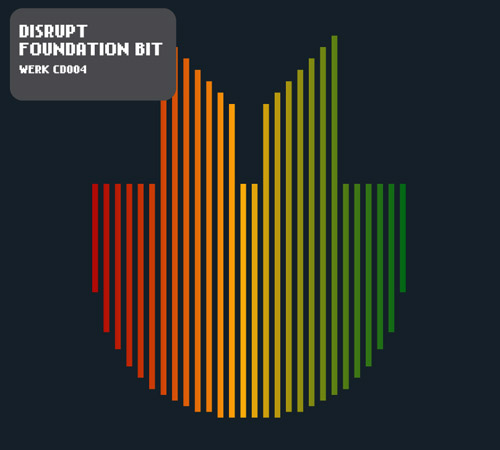 For those who don't frequent the sites of MP3-only, Creative Commons-licensed netlabels, Jan Gleichmar's Jahtari is a go-to virtual imprint enamored with the long-departed sounds of 80s digital dub and dancehall reggae. Since 2004, his simulated 7" releases both there and elsewhere in the netlabel world built up enough of a reputation to warrant this physical release to showcase his balmy eight-bit informed productions.
For those who don't frequent the sites of MP3-only, Creative Commons-licensed netlabels, Jan Gleichmar's Jahtari is a go-to virtual imprint enamored with the long-departed sounds of 80s digital dub and dancehall reggae. Since 2004, his simulated 7" releases both there and elsewhere in the netlabel world built up enough of a reputation to warrant this physical release to showcase his balmy eight-bit informed productions.
From rigid digital steppers to syrupy classic video-game console versions, Foundation Bit provides ten immensely gratifying tunes that could have easily come to us via time capsule as much as a modern bedroom studio. At least half of the material on this, a compilation of some of his best cuts as Disrupt, was previously available for free through Jahtari, though Gleichmar wisely "deleted" those tracks in advance of this new CD for free-spirited independent Werk Discs. That strategic move could serve as a good business model for other artists coming up through these legitimate online file-sharing communities.
Gleichmar clearly romanticizes not only the history of Jamaican music but also a now-quaint sci-fi futurism embraced by many of his predecessors, often fetishizing through the use of speech samples targeted at trainspotting geeks. "Blast You To Bits" and "Bomb 20" achieve this with almost comical effect, though their sturdy foundations keep them tough enough. While "True Creators" nods appreciatively in the direction Sheffield bleep legends LFO, pilfering the robotic hook from "We Are Back," "The Stars My Destination" sets its sights firmly on dub pioneers like King Tubby and Scientist. Similarly, "THC 1138" channels King Jammys' classic Sleng Teng vibe with a suspiciously accurate mechanized bass tone, straddling a dangerous line between homage and emulation like much of the material here between.
The digipak offers little information about the artist or anything else for that matter, an especially frustrating problem when I came upon "Jah Red Gold And Green," the best track of the bunch. Thanks to an official Wackies CD-R that I snagged one fine afternoon at Jammyland, one of New York's best shops for reggae music, I was already familiar with a vocal take of this track done recently by Wilbur "Stranger" Cole, known by many ska collectors for his work in the '60s. Although the version here features a brief echoed snippet of Cole's verse, I am unable to determine if this is an original Disrupt riddim or a homemade remix. While it does not take away from the track's wondrously simplistic melody, dissonant deepness, and gratuitous SID chirps, it leaves me second-guessing as to whether or not I actually like Disrupt's Foundation Bit or just his blatantly demonstrated adoration for his influences.
samples:
Read More
- Administrator
- Albums and Singles
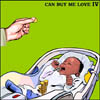 With 2 CDs and around 57 tracks, there's a lot of bang for the buck here, so long as various forms of electronic noodling is a plus, and thematic cohesion is something to stay away from.
With 2 CDs and around 57 tracks, there's a lot of bang for the buck here, so long as various forms of electronic noodling is a plus, and thematic cohesion is something to stay away from.
The only real consistency on this compilation is the electronic nature of the tracks. Putting the spazcore video game techno of Alien Hand's "The One and Only Time You Touch the Boys of Malin" on the same disc as the restrained ambient pad synths of Subsonika's "Bitch" is an odd proposition, but curator Mixomatosis decided to do just that. As someone whose taste in electronic music as a whole ranges from "it's ok" to "I love it" depending on the subgenre, I had a similar perspective on this disc. But honestly, it works better than I expected in most situations. For example, I would never consider myself to be a big fan of gabber (the late '90s techno variant where 909 drum machines are used like Mac-10s), but Peter Z & Lispent's "Jagtvej 69 (Tribute)" is exactly that, and I caught myself enjoying it.
Although it admittedly runs the gamut of styles, one glance at artists such as Stuntcock and Mr. Cunt makes me inclined to believe that the next Iannis Xenaxis is most likely NOT hiding amongst these tracks, but as a whole, it functions as a great corollary to the more scatological end of the grindcore spectrum. But with a greater variety in style….as a fan of that stuff as well, I know even I would be hard pressed to discern Anal Cunt from Agoraphobic Nosebleed in many contexts, but that's not as much of a difficulty here.
Some of the contributions are purely comical in nature, such as the aforementioned Mr. Cunt's mushmouthed yelling over faux porno groans and cheap Casio presets. Again, definitely not everyone's cup of tea, but as someone who tries to find humor in everything, I welcome such shenanigans. Admittedly, not everything over such a wide span of artists is going to be in everyone's spectrum of taste, and I must say that the intentionally cheesy General MIDI sound of Patrick May's various contributions did not do much for me, nor did Iivix's "Modern Love is So Romantic," which was too simplistic house techno in its sound. I was personally most intrigued with the slower paced moodier works like Datarapist's "Roadcones," and the esoteric ones like the glitch sputter of Hertodyne's "Uncivilized," which I caught myself returning to multiple times.
By its very nature it can be an alienating listen due to the massive variety of mostly unknown artists on here, and the compilation is quick to jump from subgenre to subgenre, so those who consider themselves to be, say, only fans of drum 'n bass will probably hate more than they like on here. More open-minded listeners, however, will appreciate the veritable variety platter that is Can Buy Me Love IV as a way to check out new artists without having to click through tedious Myspace pages or rely on friends with specious taste in music.
samples:
- Subsonika - "Bitch"
- Stuntcock - "The Casual Acquaintance Remix"
- Datarapist - "Roadcones"
Read More
- Administrator
- Albums and Singles
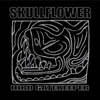 Although a rough stab at naming a genre, the UK "noise rock" scene started as a darker outgrowth of the distortion and effect laden shoegaze genre, though with more of a nod to proto-Industrialists like SPK, Whitehouse and Throbbing Gristle. As a scene it was rather incestuous, with many of the major artists such as Skullflower, Ramleh and Novatron often switching members between projects, and even connections with some of the more rock oriented bands like Godflesh, Cable Regime, and Bodychoke. If there was a definitive disc for this time, IIIrd Gatekeeper might just be it.
Although a rough stab at naming a genre, the UK "noise rock" scene started as a darker outgrowth of the distortion and effect laden shoegaze genre, though with more of a nod to proto-Industrialists like SPK, Whitehouse and Throbbing Gristle. As a scene it was rather incestuous, with many of the major artists such as Skullflower, Ramleh and Novatron often switching members between projects, and even connections with some of the more rock oriented bands like Godflesh, Cable Regime, and Bodychoke. If there was a definitive disc for this time, IIIrd Gatekeeper might just be it.
Maybe not their first album, IIIrd Gatekeeper is perhaps their most well known. The trio (at this time) of the band's only consistent member, guitarist Matthew Bower, alongside drummer and vocalist (if you count the occasional muffled groans as such) Stewart Dennison (who also did time in Ramleh), and bassist Anthony DiFranco (of Novatron/AX/JFK) crafted this hour long mix of murky, stoned out stabs at rock with a serious bend towards the experimental. Fittingly issued by Justin Broadrick's Head Dirt label back in 1992, the opening strains of guitar feedback, fuzzed out bass, and slow, pounding caveman drums on "Can You Feel It?" both makes for an appropriate question and a raison d'etre for the remaining hour or so. Throughout the track, the careful balance of hypnotic repetition meshed with subtle dynamics that consistently move along at a glacial pace is struck.
Tracks like the faster paced "Larks Tongues" manage to shift in dynamics even more, from the pummeling drums and bass that are met with vast open air spaces of unadulterated feedback and guitar abuse. "Center Puss" even displays a nod to the psychedelic with its lead guitar lines being fed through heavy wah and flange. At the same time, I can almost hear the nods to the US grunge scene that was contemporaneous to this album (at the very early stages when it was still relevant) in the muddy Black Sabbath inspired lurch of "Saturnalia" with overlaid feedback squeals.
Admittedly, there is not a great deal of change or variation from track to track on IIIrd Gatekeeper, nor should there be. It is one of the rare instances in which the simplicity in structure and minimal repetition are an asset, and not a liability, and each track shows enough dynamics throughout to remove the threat or fear of boredom from encroaching. Even the longer tracks, like "Godzilla" ape the prototypical "simplicity in excellis" approach of Velvet Underground, which showed that a simple theme amped up loud enough and pushed with enough vigor could just loom sonically and be compelling.
Although as a reissue it doesn't receive the full deluxe treatment with extra tracks or anything, the core of the album is still there and sounds cleaner than ever (based on my previous experience with tapes/MP3s of the original disc), and it comes packaged in an attractive mini-gatefold LP style jacket. The music is just as relevant now as it was some 15 years ago upon its original release, and perhaps even more so. The thick syrupy drones of Sunn O))) and the neo-shoegaze blur of A Place to Bury Strangers both owe a great deal to Skullflower's early ventures into the sludge, and kudos to Crucial Blast for making this classic available again. Now guys, maybe Xaman or Infinityland next?
samples:
Read More
- Administrator
- Albums and Singles
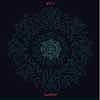 Kevin Hufnagel (Disrhythmia) and Colin Marston (Disrhythmia; Behold... the Arctopus; Infidel?/Castro!), collectively known as the New York ambient noise outfit Byla, team up with ex-Swans siren Jarboe for Viscera, an album of noise and acoustic soundscapes utilising the guitar as its main sound source. A year in the making, from spring 2006 to spring 2007, the five pieces on this CD have been carefully crafted by the Hufnagel/Marston duo to create an album full of atmospherics, harmonics, power, and above all richness, the whole complemented by Jarboe's vocal accents.
Kevin Hufnagel (Disrhythmia) and Colin Marston (Disrhythmia; Behold... the Arctopus; Infidel?/Castro!), collectively known as the New York ambient noise outfit Byla, team up with ex-Swans siren Jarboe for Viscera, an album of noise and acoustic soundscapes utilising the guitar as its main sound source. A year in the making, from spring 2006 to spring 2007, the five pieces on this CD have been carefully crafted by the Hufnagel/Marston duo to create an album full of atmospherics, harmonics, power, and above all richness, the whole complemented by Jarboe's vocal accents.
Alternating between amplified and acoustic compositions (three of the former and two of the latter), every track (each named after its respective running time) explores the richness of harmonics inherent in this particular stringed instrument. The three heavily amplified and distorted tracks—"15:35," "10:58," and "19:45"—are indeed visceral extended wall-of-sound six-stringed workouts, best heard on headphones so that the total sonic blanket can envelop the listener in a cocoon of noise. In "15:35" for example, sweeping forceful chording and subtle layering—along with a delicate ringing bell-like motif that comes in about half-way through—constantly builds one upon the other, creating tonalities that enhance and complement the main backdrop. "19:45," the standout track for me, starts out with a rapid-fire lead figure before exploding into a barrage of blistering fuzzed-out noise that completely pummels and sears through both ears scorchingly, to meet somewhere in the middle and melting any bits of gray matter that get in the way. Finally the blanket of noise gives way to searing feedback that constitutes the final two or three minutes of the piece. The style of subtly changing layering first manifested in "15:35" is continued here in a slow-rolling evolution, ensuring that the sound never remains static or redundant. The remaining noise track, "10:58," is very much in the same vein with the addition of lower-register growly vocals, infusing a demonic flavor into the meat of the piece.
Contrastingly—and quite startlingly so in some respects, given the rest of the album—"02:28" and "06:41" are entirely acoustic affairs. Of the two the latter is the better, opening with a miminalist plucked harmonic leading into some finger-style treated guitar providing both backdrop and counterpoint for Jarboe's ethereal voice. These two acoustic songs are almost like quiet interludes, intended to let you catch your breath before plunging you headlong once more into the maelstrom.
Admittedly I use the word mesmerizing quite often and I won't apologize for using it again in the context of this album. It is indeed a mesmerizing set of songs that batter and soothe by turns, and that both repels you with unadulterated power and then soothingly beguiles you with delicately soft tones. That aspect surprised me on the first hearing and I wasn't entirely convinced that it was a successful move, but having heard it three or four times since I now believe it to be one of the strengths of the album, emphasizing a) the range of the musical explorations of the musicians and b) their willingness to engage in a bit of risky experimentation. Many albums of a more mainstream nature seem to include a quiet track or two just for the sake of it, as a sop to variety and so-called musical breadth, rather than as a deliberate statement. This collaborative album is both a definite and considered statement, in other words that distorted guitar noise can be just as beautiful as the finest acoustic ballad.
samples:
Read More
- Administrator
- Albums and Singles
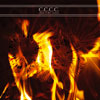 These Japanoise legends' first album since 1996 is a triumphant return, a single joyous no-nonsense extreme noise barrage lasting for 43:18, and their second album (after 1996's Flash) on the UK label Cold Spring. The trademark walls of fuzz-drenched guitar overlaid with howls and ear-splitting high-end keyboard screeching coupled with Mayuko Hino's vocals are all there and are a perfect recipe for further consolidating their status in the upper stratosphere of japanoise acts.
These Japanoise legends' first album since 1996 is a triumphant return, a single joyous no-nonsense extreme noise barrage lasting for 43:18, and their second album (after 1996's Flash) on the UK label Cold Spring. The trademark walls of fuzz-drenched guitar overlaid with howls and ear-splitting high-end keyboard screeching coupled with Mayuko Hino's vocals are all there and are a perfect recipe for further consolidating their status in the upper stratosphere of japanoise acts.C.C.C.C. (Cosmic Coincidence Control Centre) is porn star Mayuko Hino and her husband Hiroshi Hasegawa (YBO2, Astro & South Saturn Delta) with contributions from Fumio Kosakai (Hijokaidan & Incapacitants) and Ryuichi Nagakubo (Tangerine Dream Syndicate). It is worth noting that Hino believes that noise should be emotionally driven rather than intellectually, in other words it is a matter of being in the moment and expressing that moment in whatever way feels appropriate; she also believes that much can be gleaned of a performer's personality through the species of noise produced. On a personal note I think this is how the best abstract art operates, that every painting, drawing, or performance is representative of a particular point in time and a particular emotion. Without the straitjacket of intellectual underpinnings the results become less restricted and much freer with a much broader canvas on which to be expressed. Chaos is the Cosmos is painted with broad frenzied brushstrokes and with flailing abandon for the most part, slabs of guitar fuzz feedback and keyboard generated noise providing solid background for the sound of howling instruments being tortured and abused whilst Mayuko's voice and screams and screeching caterwauling guitar pick out the highlights. It never lets up for the entire length with the exception of a brief interlude that lasts about a couple of minutes. It then picks up the relentless tempo once more until the conclusion. It is the roiling boiling heat of chaos and creation—which is indeed the foundation of cosmos—that beneath every manifestation of apparent order there prevails, on some microscopic level, disorder; atoms and molecules colliding with and spinning off each other in eternal turmoil, planets, asteroids and huge star-systems tearing themselves apart and reforming in continuous galactic evolution. It is the black hole that swallows everything within its purview, rending and smashing, dissembling matter into its constituent particles in a violent whirlpool of wanton destruction.
This, however, is not to imply that this is just noise for the sake of it. There is constant evolution and invention, always something new to engage the ear, enervating the mind and listener. This is what marks this out above a great deal of noise: the sheer playfulness and inventiveness, and my attention was held for the full length of almost 45 minutes. This ever-changing and evolving piece reflects the hermetic dictum as above, so below it would appear—just like in the deepest reaches of our cosmos the engines of chaos bring order out of themselves in bursts of intense creation. Moreover, this monumental maelstrom of cacophony gives the distinct impression that it has always existed even before the play button was pressed to ON and that it will go on existing well after the CD has stopped. I would hope that C.C.C.C. will take the time to capture another glimpse of that eternal creation and unending destruction for us to enjoy sometime in the near future; at least I hope we don't have to wait another ten years before the next release.
samples:
Read More
- Administrator
- Albums and Singles
 Two of ambient music's greatest strengths are conjuring up isolated locations and immense timelines. In Time Frost, Robin Storey uses them to imagine a Europe chilled by ocean currents altered by global warming. It is easy to be cynical about climate change as an artistic subject considering its status as Hollywood's pet-cause of the moment. Time Frost does something far more satisfying: it calls to mind vivid images that do not need to be interpreted through an ideology.
Two of ambient music's greatest strengths are conjuring up isolated locations and immense timelines. In Time Frost, Robin Storey uses them to imagine a Europe chilled by ocean currents altered by global warming. It is easy to be cynical about climate change as an artistic subject considering its status as Hollywood's pet-cause of the moment. Time Frost does something far more satisfying: it calls to mind vivid images that do not need to be interpreted through an ideology.
Considering the chilly subject matter, the album has a thick, full bodied sound. Storey used an old vinyl copy of Strauss' Blue Danube for much of the source material. Even though the piece is digitally processed beyond recognition, the richness of the orchestra and the snowy crackle of the record still remain. That analogue glow colors the sparse, unaccompanied loops, providing variety to the simple, repetitious song structures. Even in the arid, droning "Horizon Discrete," the fluidity of Strauss' music remains intact, like the wind blowing up drifts from a glacier.
The hypothetical waste-land that Storey envisions is not featureless and uniformly hostile. The time lapse waltz of "Thin Light" elegantly evokes a winter sunrise. Bubbly synthesizers mimic a thick, wet snow-shower in "A Color of Darkness." Without shouting the message, these tracks suggest that the world's beauty will continue, even if it becomes too hostile for us to live on it.
Despite a personal affinity for the natural world, music with environmental themes has always struck me as cheesy. Although the destruction humanity inflicts on the planet is truly dramatic, it is easier to make an episode of Captain Planet than a nuanced work of art. By remaining ambiguous, however, Time Frost has a much better chance of aging well than the bloated pontifications of Live Earth. Even if global warming is not your crusade, you can still sit back and enjoy this album. No moralizing is required.
samples:
Read More
- Administrator
- Albums and Singles
 The second album since the adoption of the more formal sounding name of Carter Tutti is a strange beast. The title of the album made me expect a more violent and frenetic style but the duo show that being feral is not all about bared teeth and naked aggression. Feral can be more beautiful and tender than any tamed creature or thought. The music is wild in that it is free from much outside influence. Immediately it is obvious that no matter what the name on the CD case is, this is the same animal at heart.
The second album since the adoption of the more formal sounding name of Carter Tutti is a strange beast. The title of the album made me expect a more violent and frenetic style but the duo show that being feral is not all about bared teeth and naked aggression. Feral can be more beautiful and tender than any tamed creature or thought. The music is wild in that it is free from much outside influence. Immediately it is obvious that no matter what the name on the CD case is, this is the same animal at heart.
There is a delicate and serene mood to Feral Vapours of the Silver Ether; the quiet piano melody of "Torn Window" is one of the loveliest things Carter and Tutti have done under any name. The imagery Cosey employs throughout the album is equally gorgeous; metaphysical and poetic at the same time, the ghost of William Blake haunting her lyrics. Almost a whisper and full of hope, her vocals are very much the silver ether of the album's title. Her voice is perfectly matched by her mournful cornet blasts, as primal as always but with a more controlled force. Chris Carter's electronic treatments and rhythms are barely there but add definition to the airy atmospheres, like thin embellishments with oils on a watercolour painting.
Compared to Chris and Cosey's other big album of the year (Throbbing Gristle's Part Two: The Endless Not), this is a far more satisfying release. Where I found the new TG to be good but far from a return to form (especially after the excellent TG Now from a couple of years ago), Feral Vapours… is as solid as any of Chris and Cosey's previous releases. There are some similar sonic territories being explored here as on Part Two (as expected really), the quieter and jazzier side of Part Two evidently owed a lot to this half of the group. "Breathless Endings" is of a similar vibe to TG's "Rabbit Snare"; a kind of dark blue.
With Feral Vapours…, Carter Tutti continue to progress. The pastoral approach they have adopted in recent years is as engaging as the more robust and danceable beats of Chris and Cosy. In all honesty I prefer this new approach, much like when Coil embraced their moon music fully and entered the most interesting part of their career. Whether this is going to be a long-term engagement with the gentler side of their music is anyone's guess but for now Carter Tutti are definitely piquing my interest more than Chris & Cosey did.
samples:
Read More
- Administrator
- Albums and Singles
 I cannot say I am a hip hop guru (hip hop is for the most part is one of those "must investigate at a later date" areas of music for me) but I know what I like and I like Northern State. Although their new album is not consistently great, the bits that shine are bright enough to obscure the weaker moments. The album is fairly formulaic but these ladies have a charm which lets them carry the songs off.
I cannot say I am a hip hop guru (hip hop is for the most part is one of those "must investigate at a later date" areas of music for me) but I know what I like and I like Northern State. Although their new album is not consistently great, the bits that shine are bright enough to obscure the weaker moments. The album is fairly formulaic but these ladies have a charm which lets them carry the songs off.
Despite the feelings of musical inertia I sometimes get from Can I Keep This Pen? in terms of pushing the creative envelope, it is still an entertaining album. The rhymes are not bad; in some places they are geeky and funny, in others they are sharp and serious but they never really have as much of a bite as they could. Songs like "Better Already" and "Away Away" are cracking pieces of pop, the chorus on the latter is particularly good. Some of the brasher tracks such as "Cold War" do not sit quite well with me but I would not go so as to say that I dislike them; they just don't have the same magnetism as the better parts of the album.
Taking pot shots at conservative America, "Sucka MoFo" makes references to pro-life Republican voters driving gas-guzzling vehicles. Not to belittle these topics but lines poor political choices come across as easy targets. Then again, mainstream hip hop is all about buying the big eco-unfriendly cars and wasting money on bad jewellery (speaking of which, there is a great line early on: "You got a sweat suit and you're dripping with diamonds/Tell me are you a rapper or a mom from Long Island?") so Northern State come across as positively radical.
While Can I Keep This Pen? is not a breath of fresh air in terms of an imaginative approach to rap, it is at least a gust of fresh air in terms of pop music that I can relate to. Musically Northern State have a lot more in common with normal indie rock bands with the majority of songs being driven by guitar riffs that Bernard Sumner would be proud of. This is probably the hook that has caught me as I find a lot of hip hop backing tracks tough to listen to. Whether pandering to nerdy white boys is a good or a bad thing is a moot point, all that really matters is that this is a fun and enjoyable album.
samples:
Read More
- Administrator
- Albums and Singles
 Coming so soon after their exquisite Vintage Burden and their Electricity Ghost outtakes collection, this is an album that Charalambides could have done without dropping. The solo work of both Tom and Christina Carter is evolving at a furious pace, releases coming monthly that both investigate and fulfil their countless ideas. If rumor is to be believed, these songs were recorded live in one take and then overdubbed with numerous effect and layers. It is in this extra work that the fault lies, leaving Likeness in the void between song and improv.
Coming so soon after their exquisite Vintage Burden and their Electricity Ghost outtakes collection, this is an album that Charalambides could have done without dropping. The solo work of both Tom and Christina Carter is evolving at a furious pace, releases coming monthly that both investigate and fulfil their countless ideas. If rumor is to be believed, these songs were recorded live in one take and then overdubbed with numerous effect and layers. It is in this extra work that the fault lies, leaving Likeness in the void between song and improv.
This halfway house between posts sounds like a great idea on paper, the fleshing out of both instinct and chemistry with time and detail. The lack of fragility in much of Tom Carter's playing means the album is weighed down, the overdubs becoming a pair of concrete boots. The over-gesticulating guitar is amongst some of the most out-of-place playing in Charalambides career, the work on "Figs and Oranges" and the finale of "Cloudy Day" is almost Knopfler-esque in its obviousness. The song's almost ethereal double tracing gets close to freer Charalambides, but doesn't quite make it.
Almost every song here has a single element that traps the song in its infancy. In the case of "Do You See?," Christina's more or less stentorian delivery might soften as it multiplies but it is already too late. Much like MV & EE on their recent Gettin' Gone album, Charalambides have seemingly sought out the '60s-'70s spectrum as opposed to any of primitive and experimental forms. Struggling between form and freedom the album sounds like neither. It is possible that some of the original stripped versions of these tracks might have made a better Likeness, but that is just idle speculation; this album simply doesn't made the grade that the band set themselves over the years.
samples:
Read More
- Administrator
- Albums and Singles
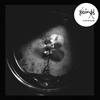 A solo work from Hototogisu/Double Leopards member Marcia Bassett sounds exactly like the photo on the cover: dark, gray, and sinisterly mysterious. And it excels at living up to these adjectives.
A solo work from Hototogisu/Double Leopards member Marcia Bassett sounds exactly like the photo on the cover: dark, gray, and sinisterly mysterious. And it excels at living up to these adjectives.
Across the four untitled tracks, Bassett sticks to building mini-dramas out of dark, heavily effected guitar work. The exception is the first track, which is instead reminiscent of an ancient music box playing after being under years of grime and decay. A gentle melody is obviously there, but it is covered in thick, viscousy textures of noise that are almost tangible. The track is more about the effects and distortion instead of the melody, or at least it was the element that drew the attention of these ears. The other tracks tend to lean more on the guitar end of things, such as the second track's guitar feedback drone that stretches from the track, off into the horizon and into infinity that, as the time clicks away, becomes darker and more frightening with each minute.
The third track is a bit harsher, swelling distorted guitar riffs that loom like the monolith riffing of drone poster boys Sunn O))), but from a distance far, far away. The riffs slowly crawl across the cold night air, slowly becoming more and more psychedelic into dissolving into pure madness. The progression from the gentle opening into increasing darkness and violence reaches its logical conclusion in the unfortunately too short final track of pure unabashed guitar noise. Rather than just being an exercise in pure feedback squeal, it instead has a distant, alien quality to it that makes it much more unique and compelling.
Zaimph's latest entry in Utech's Arc series continues both the series' focus on experimental artists who are not necessarily the most well known but are at the top of their game, as well as attention to detail in gorgeous, minimalist packaging that gives the series its uniform look. As the series is drawing to its end, it shows no sign of letting up in its brilliance, and Bassett's installment is testament to that.
samples:
Read More

